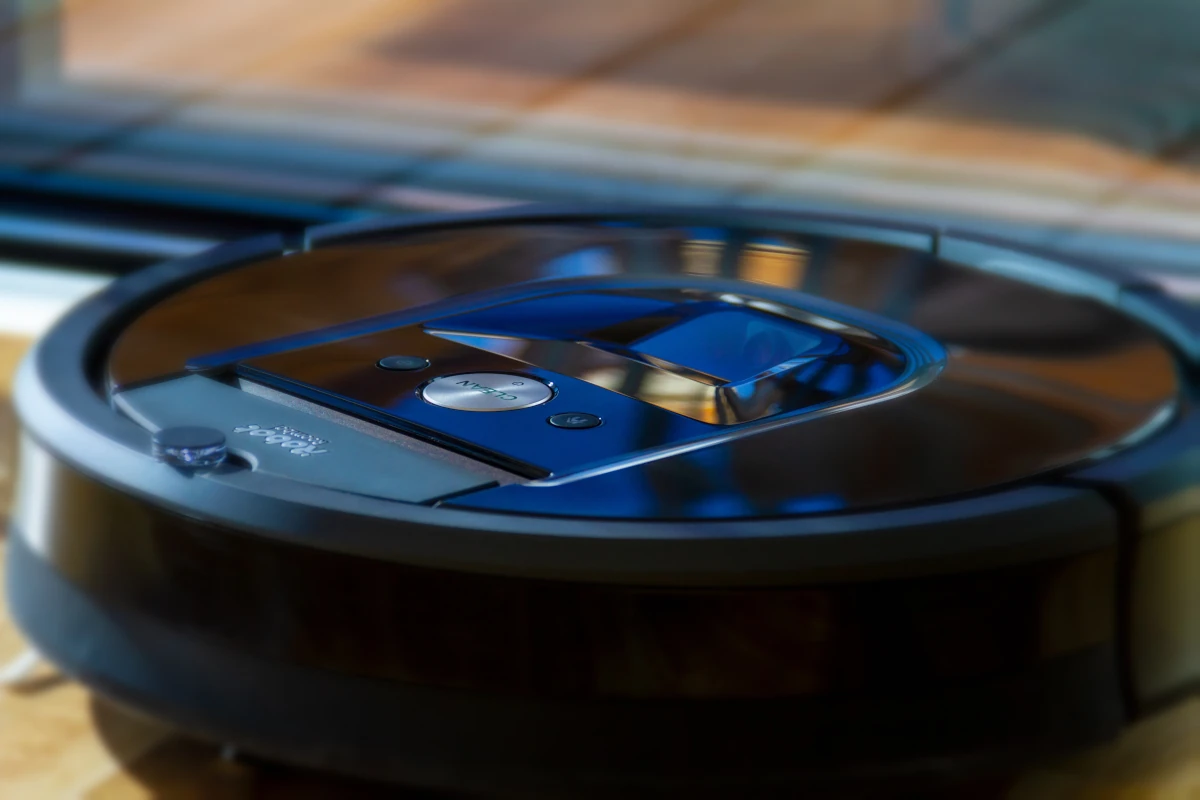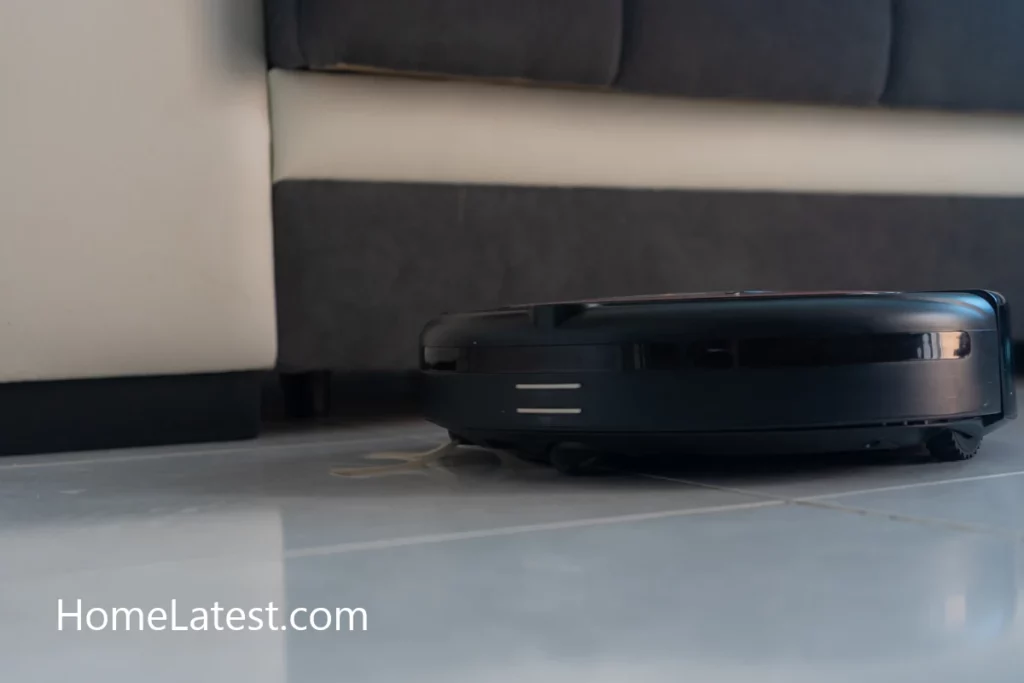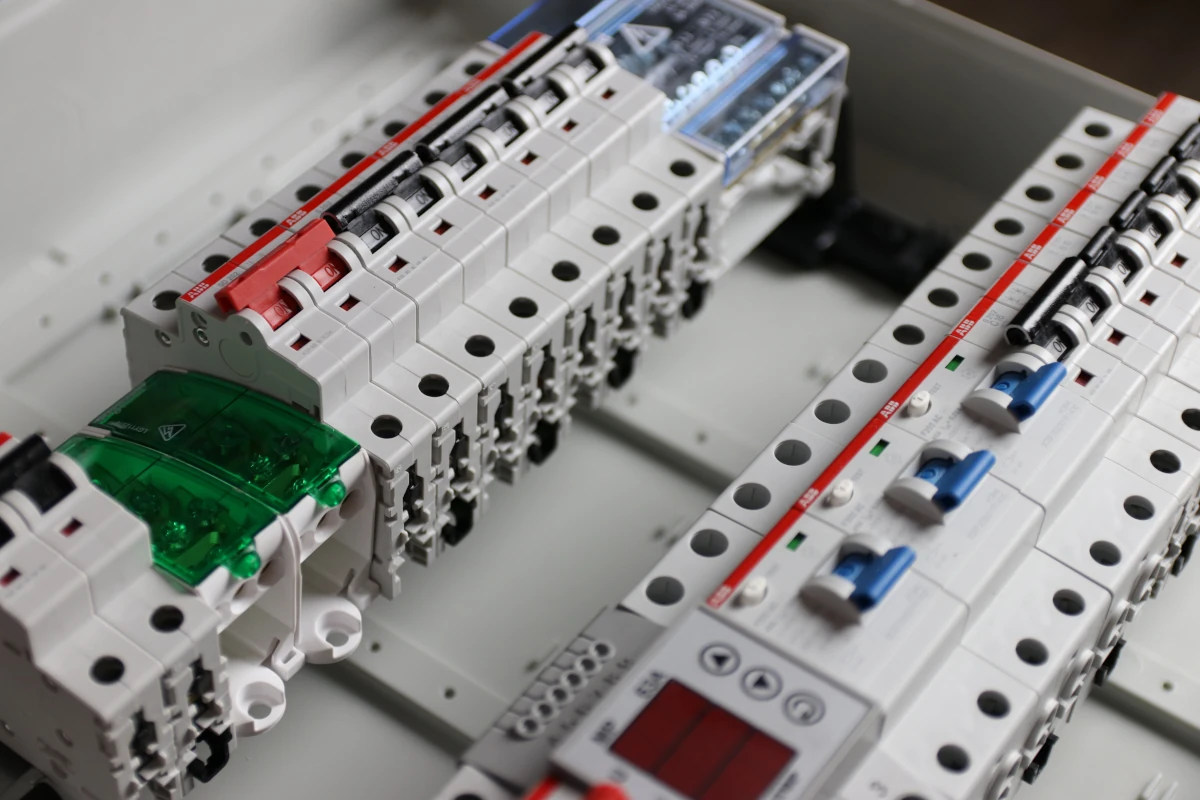If you have a Shark robot vacuum, iRobot Roomba robot vacuum, or any robot vacuum for that matter, you may be wondering if you can use it with power outlets with different voltages in other countries.
Understanding the voltage specification of your vacuum can help you decide if you should or can take it with you when you travel to a destination that other power ratings (e.g UK has 230V AC 50Hz)
Shark robot vacuum & iRobot Roomba Vacuum have specific models that are dual voltage capability which means they can work in the USA with a 110V AC 60Hz rating and in other countries such as the UK that have voltage ratings of 230V AC 50Hz.
- How To Identify If Shark & iRobot Roomba Robot Vacuums Are Dual Voltage?
- What Voltage Is Shark & iRobot Roomba Robot Vacuums In The USA?
- What Voltages Do Shark & iRobot Roomba Robot Vacuums Support?
- Will Shark & iRobot Roomba Robot Vacuums from the USA work in Europe and Asia (India)?
- Can You Bring Shark & iRobot Roomba Robot Vacuums On An International Plane?
- Can I Put A Shark & iRobot Roomba Robot Vacuum In My Checked Luggage?
- Final Thoughts
- Sources
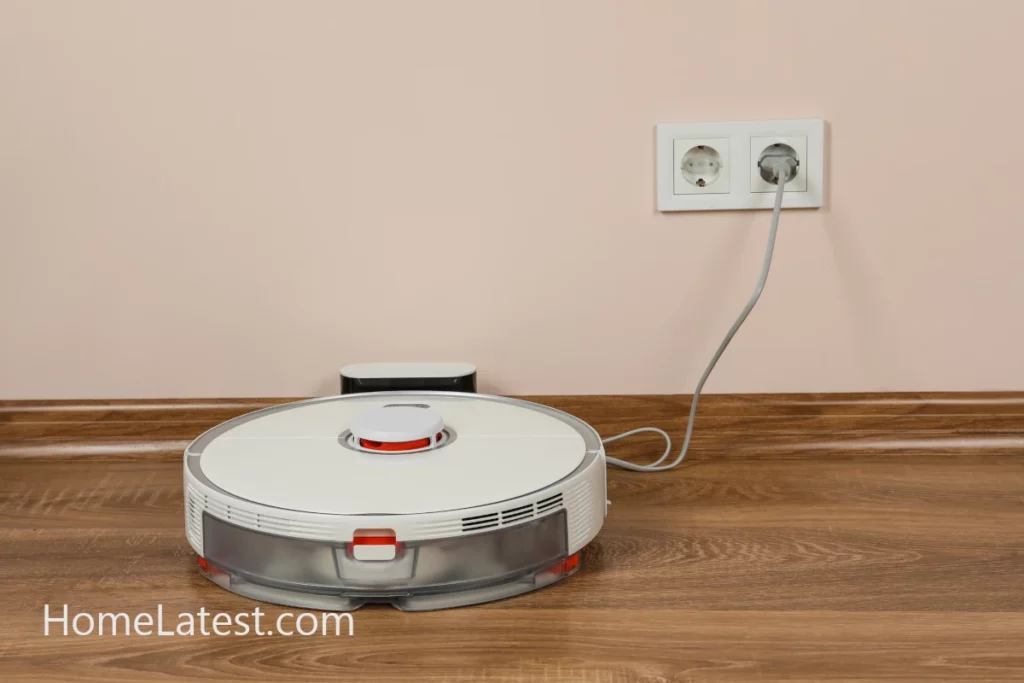
Related:
- Are Robot Vacuums Worth It In India? (Solved)
- Can Robot Vacuums Go Over Transition Strips (Explained)
- What Is A Robot Vacuum’s Work Envelope? (5 Things To Consider)
How To Identify If Shark & iRobot Roomba Robot Vacuums Are Dual Voltage?
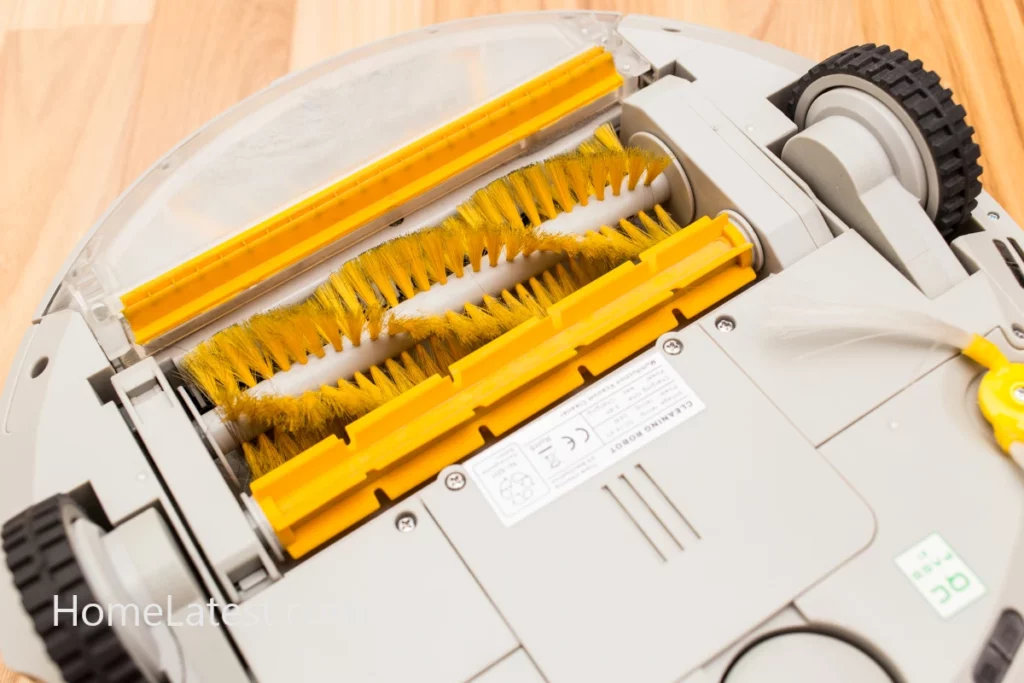
The best way to find out about a robot vacuum’s voltage is to check the specification on the box, check the backside of the robot vacuum, check the user manual, or check the manufacturer’s website.
You should be able to find a list of all product specs including voltage compatibility.
For example, iRobot Roomba’s nominal electrical characteristics would be mentioned as per the below table:
| iRobot Roomba clean base 17070 (Dual Voltage) | iRobot Roomba clean base ADE-N1 (Single Voltage – 110V) | iRobot Roomba clean base ADE-N2 (Single Voltage – 230V) |
|---|---|---|
| Input voltage: 100–240V | Input voltage: 100–127V | Input voltage: 220–240V |
| Input frequency: 50/60 Hz | Input frequency: 50/60 Hz | Input frequency: 50/60 Hz |
| Output voltage: 21–22.5 VDC | Output voltage: 20.5 VDC | Output voltage: 20.5 VDC |
| Current output: 1.25 A | Current output: 1.25 A | Current output: 1.25 A |
If you are shopping in a store, you can also ask customer service about the voltage specs.
Some robot vacuum cleaners will be single voltage i.e 110V AC 60Hz for the USA, while higher-end robot vacuums such as Shark and iRobot have single and dual voltage compatibility.
What Voltage Is Shark & iRobot Roomba Robot Vacuums In The USA?
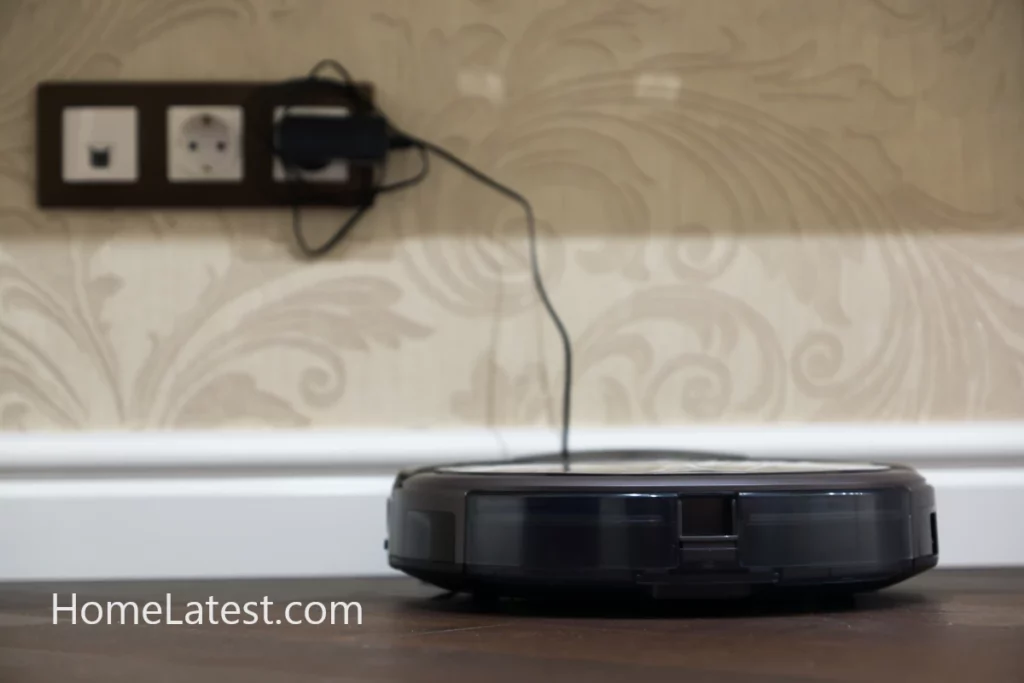
Shark robot vacuums & iRobot Roomba Robot Vacuums have a 110 voltage and are not compatible with others. This has been the case for a long time due to the USA’s voltage specifications which fluctuate between 100-120 volts AV.
100 volts and 120 volts are so minutely different that the end-user won’t even notice the difference at the end of the grid.
As a result, a national standard for the delivery of electrical services was adopted. As of today, electricity is delivered to most households in the USA at 120 volts AC plus or minus ten percent with a frequency of 60Hz.
What Voltages Do Shark & iRobot Roomba Robot Vacuums Support?
Both brands have standard American voltages, and will not work with other voltages without an adapter. The standard American voltage is 110.
Separate 240v feeds are required by US utility companies for each residential home. A 120V AC system is composed of two 180-degree out-of-phase legs. Your neutral line has a voltage of 0V at its center.
The United States uses a 60Hz AC power standard. In some countries, the standard is 50Hz. During the AC period, the voltage oscillates between 120V and -120V.
Is it possible to get 240 volts AC by connecting all legs rather than just one leg, since the two legs that feed your house are unphased?
In a balanced circuit, such as a water heater or range, two legs will produce double its voltage (a line that fluctuates between 240 volts and 240 volts). A leg provides current to one leg and a leg returns it by the other leg in 240V circuits, which do not use a neutral wire.
There is a difference between 208V and 480V, which are different voltages. The use of three-phase electric motors is more common in industrial and commercial applications.
These power systems are three-phase with 208V as a Y-connected voltage and 120V as a common voltage from any two phases. When the neutral is connected to any single phase in a
Circuit with three phases and a Y-connector, the voltage is 480V between the two phases. Motors and other 3-phase equipment should not be connected to a two-phase electricity supply, such as your home’s.
Your equipment will be damaged in such a way that you will be unable to make it work..
Will Shark & iRobot Roomba Robot Vacuums from the USA work in Europe and Asia (India)?
If you have purchased a Shark robot vacuum or iRobot Roomba robot vacuum in the USA and plan to use it in Europe, you will need to make sure the voltage matches up and the plugs work.
Both brands of robot vacuum charge at the base and run on battery. That means you need to make sure the charging base can be plugged into outlets in Asia and Europe.
If the plug does not match, you can find adapters that will allow you to plug the charging base into the wall so the vacuum can charge completely.
Once it is charred, the battery should power the vacuum and let it work as usual. Keep in mind, using a robot vacuum outside its range will void any warranties that may have been included with it.
You may also be able to use the vacuum with a different base. If the base has the correct voltage it may still charge the vacuum battery.
Read this great article on the question: Are Robot Vacuums Worth It In India? (Solved)
Can You Bring Shark & iRobot Roomba Robot Vacuums On An International Plane?
Most International airlines do allow any type of robot vacuum to be taken on a plane, as long as you either keep the whole thing in your carry-on bag or check the vacuum but keep the battery in your carry-on.
Some airlines also have their own rules and you may want to check the rules and restrictions for the airline before you attempt to fly with your robot vacuum.
Can I Put A Shark & iRobot Roomba Robot Vacuum In My Checked Luggage?
If you plan to take your robot vacuum on a plane, the best thing you can do is take the battery out of the vacuum. Due to the battery size of these vacuums, they must be carried in your carry-on bag.
If you don’t want to lug around the full vacuum, you can remove the battery and check the vacuum and only carry the battery with you.
This is the case for any vacuum that has a battery over 100Wh in size. Take the time to remove the battery before you arrive at the airport.
It’s also a good idea to call the airlines ahead of time to make sure it’s okay to take your vacuum with you on the flight.
While most airlines are fine with this as long as you follow the rules about battery size and checked baggage, it’s better to check to be sure before you arrive at the airport and have to be turned away with your robot vacuum.
Final Thoughts
If you have a robot vacuum with a single voltage you may not be able to use it in other countries. You will only be able to use it if you have a 110-voltage outlet or a step-up transformer and adapter.
Most models do allow vacuums to be checked in the plane as long as the battery is taken in the carry-on. It’s always best to check with the airline before you book your flight.
Sources
Why isn’t there a standard voltage around the world? (worldstandards.eu)
Smart Robot Vacuum Cleaner | Shark 2-in-1 Robot (sharkclean.com)

